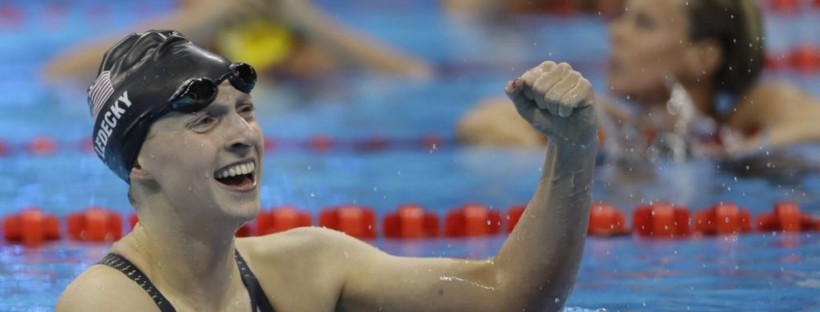Where Do Female Athletes Get the Recognition They Deserve? All-Girls Schools.

Women were not allowed to participate in the first modern Olympic games held in 1896. At the 1900 Olympics held in Paris, there were only 22 women among 997 athletes competing in just five sports. Female participation increases with every new games and women competed in every sport for the first time at the 2012 Olympics in London.
The world has come a long way, but as the coverage of the 2016 Olympics is showing us, we still have far to go. The current headlines say it all:
- “Women Make History and Their Husbands Get the Credit. How Infuriating is That?” – The Washington Post
- “The Media are Saying and Doing a Bunch of Sexist Stuff During the Olympics” – The Huffington Post
- “She’s ‘Old, for a Woman’: Media Around the World Condemned for Sexist Olympics Coverage” – The Los Angeles Times
- “How to Talk About Female Olympians Without Being a Regressive Creep – A Handy Guide.” – The Guardian
Instead of celebrating the achievement that female athletes are out in force at the 2016 Olympics with the highest percentage of female competitors in history, there’s a seemingly unending need for the success of these female athletes to be linked to the men in their lives.
How do we educate our young women to be resilient – persevere against the odds, build confidence to take risks, have the courage and conviction to be leaders – despite the uphill battles they face with negative media, unequal pay (though major strides were recently made when the Senate unanimously approved equal pay for the U.S. Women’s National Soccer Team), and body-shaming?
One answer is all-girls schools.
According to the National Coalition of Women and Girls in Education, “despite substantial benefits of participation in sports… students have fewer opportunities to participate in both high school and college sports than their male counterparts.” But not at all-girls schools.
In an all-girls school, a girl can comprehend her value and her capabilities in ways that have nothing to do with how she looks. She can be free to try new things and try on new roles. She can follow her ambitions without wasting a second thought or a backward glance on how her male counterparts might perceive her.
By subtracting boys, an all-girls education adds opportunities. At a girls’ school, a girl occupies every role: every position on every sports team, every team captain. Athletic facilities and coaches are dedicated to girls. There’s no waiting for access to the field or gym until after the football team practices. Not only does she have a wealth of avenues for self-exploration and development, she has a wealth of peer role models. Girls’ schools develop scholar-athletes where everyone supports the girls’ teams: every fan in the stands is cheering for girls.
Girls’ schools empower students to become bold leaders. “Programs at girls’ schools focus on the development of teamwork over other qualities of leadership, while the qualities of confidence, compassion, and resilience also ranked prominently,” states Dr. Nicole Archard in her report Student Leadership Development in Australian and New Zealand Secondary Girls’ Schools.
A welcome exception to the media mishandlings about how to talk about female Olympians was when NBC broadcaster Rowdy Gaines said of the US swimmer Katie Ledecky: “A lot of people think she swims like a man. She swims like Katie Ledecky, for crying out loud.”
Ledecky, who wowed audiences around the world by winning one silver and four gold medals with unparalleled grace and focus, graduated last year from Stone Ridge School of the Sacred Heart. Among the other female Olympians who attended all-girls schools are Kate Grace, an alumna of Marlborough School who won the women’s 800 meters at the U.S. Olympic trials to earn her place on the U.S. Olympic Track and Field Team. Of the female athletes representing Great Britain, 27% attended all-girls schools.
In girls’ schools we have a saying that our schools should not be judged by the absence of boys, but rather by the presence—the self-assurance, poise, and derring-do—of the girls themselves. The same can be said of female athletes. They should not be judged by the men in their lives, their appearance, or age, but rather by their accomplishments. And that is what they are, their individual accomplishments.
So let’s give female athletes around the world the proper admiration and credit they deserve for their hard work and dedication. Just as we do for our male athletes.
Megan Murphy, Executive Director, National Coalition of Girls’ Schools
Related tags: All-Girls Environment, All-Girls Schools, Benefits of Girls Schools, Body-Shaming, Developing Confident Girls, Developing Girls as Leaders, Female Athletes, Gender Equality, Girls Education, Girls' Schools, How Girls Learn to Lead, Olympic Media Coverage, Olympics 2016, Rio 2016, Scholar Athlete, See It To Be It, Single-Sex Research